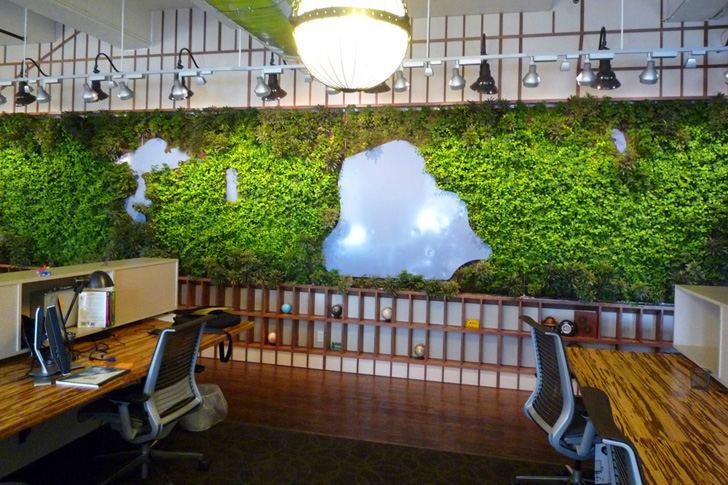When searching for the perfect office plant, you should probably be looking for a species that is relatively easy to care for and doesn’t have strict lighting requirements. Many low light houseplants are also low maintenance plants and often do not require much time or attention, making them ideal for busy workers and those climbing the corporate ladder.
Although many of these plants may need water, some light, and attention, they will likely survive well without access to sunlight for several hours. Low light plants thrive inside and are ideal as indoor plants or under the awning of a patio cover. Some of these plants may not enjoy sunlight and suffer from withering leaves.

Our Favorite 5 Low Light Plants For The Office
Many low-light plants work perfectly indoors as houseplants, but five of them are the most ideal for busy gardeners. In addition to having unique and stunning colors and stripes, they also offer several other features like holey leaves, hardy designs, and ribbed stems.
Whether you want something small or something large and eye-catching, there is a low-light houseplant that will fit your desires and maintenance level.
Spider Plant
The scientific name for a spider plant is Chlorophytum comosum. This plant is one of the easiest plants to care for, especially indoors. The spider plant is a stunning and vibrant green color with pale green stripes at the sides of its leaves. This plant contains dozens of leaves that sprout upward and flop over its home container.
The spider plant gets its name from the little bundles of leaves, sometimes called spiderettes, that hang off the original plant. These spiderettes are reminiscent of a spider on its web.
Spider plants do best in well-drained soil and a container with drainage holes. These plants are tough and can survive droughts, arid weather, and little to no light. Many spider plants will survive without seeing the sunlight for days, weeks, or months.
Snake Plant
The scientific name for a snake plant is Dracaena trifasciata, in the genus Sansevieria. Snake plants are unique houseplants because they are resilient in nearly all conditions. The plant’s leaves have alternating stripes of dark and pale green.
This plant is forgiving and can survive a long time without much care or maintenance and still thrive. It will sprout new shoots when left in a container large enough for the roots to spread upward. In some cases, snake plants can spread over a considerable distance, creating new plants from shoots extending outward.
A snake plant is a broadleaf plant that grows slowly and prefers the USDA hardiness zones between 10a and 12a.
Lucky Bamboo
Lucky bamboo is a stunning plant that grows upright and in spirals. Combining upright and spiraled lucky bamboo shoots can create a vibrant and lovely display. These plants do not require much sunlight and are hardy enough to survive in tumultuous conditions.
This plant is native to Southeast Asia. However, the herbaceous perennial has been known to grow natively in Western Africa and can get up to five feet tall. It will spread over an area because the roots will create more shoots to grow new bamboo.
Choose a container that drains well because lucky bamboo prefers a clean container and filtered water. Keep in mind that lucky bamboo does not have to be planted in soil. It can thrive in water littered with rocks. It does not require much light and, in fact, it can survive with no light at all.
Pothos
A pothos plant is an ideal indoor plant because it does well in all light conditions. This plant will vine and spill over its home container, making it a stunning addition to a home’s aesthetic and design.
It is important to note that most pothos varieties toxic to humans, dogs, and cats. They can cause stomach irritation and possibly death when ingested in large quantities. Consuming pothos does not typically lead to death, but this area of concern should always be kept in mind.
Pothos plants enjoy fertilizer every few months to keep them growing healthy and give them strong roots. Fertilizers can also help them reach maturity quicker.
Monstera
Monstera plants are native to Central America and are known for their iconic leaf design. A monstera leaf is broad and has a deep green color, with holes on both sides of the leaves. While these holes are reminiscent of a prehistoric era, they weren’t discovered until the 1600s.
These plants do not require much light and can survive for weeks without good sources of light and water. However, this hardy plant can survive in direct sunlight, but it will not thrive as well in these conditions. A monstera may not need light, but it will require well-draining soil with plenty of rocks to keep the soil plentiful with air access.
Monstera are also easy to propagate, so you can share you plant with other employees in the office if you’d like!
Final Thoughts
The 5 low light plants listed above are the perfect addition to any office. Snake and spider plants are especially popular because of their striking colors and low maintenance needs.
Lucky bamboo is a unique and sophisticated choice as it can come with cultural abundance and information. Designing your office with lucky bamboo can help you connect with other cultures and regions. Pothos and monstera plants are also stunning plants that can offer your office an air of sophistication and elegance.
Although there may be many other options, these five office plants hold the most benefits and require the least light to thrive in nearly any environment.